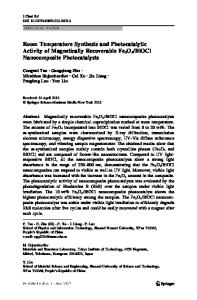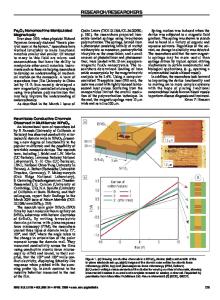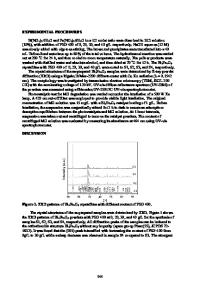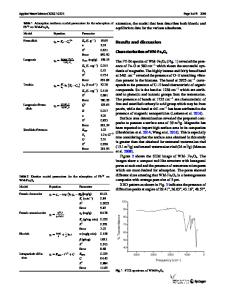Magnetically retrievable Bi 2 WO 6 /Fe 3 O 4 /Na-MMT composite: fabrication and photocatalytic activity
- PDF / 1,461,506 Bytes
- 15 Pages / 439.37 x 666.142 pts Page_size
- 1 Downloads / 331 Views
Magnetically retrievable Bi2WO6/Fe3O4/Na‑MMT composite: fabrication and photocatalytic activity Shan Zhao1 · Hufang Jin1 · Yanqing Yang1,2 · Jiamin Cui3 Received: 2 March 2020 / Accepted: 21 July 2020 © Springer Nature B.V. 2020
Abstract Magnetically retrievable bismuth tungstate/iron oxide/sodium montmorillonite composite (Bi2WO6/Fe3O4/Na-MMT) was synthesized via a simple solvothermal process. The structure and morphology of as-synthesized composite have been investigated by a series of characterization techniques, the photocatalytic performance was evaluated through the degradation of rhodamine B (RhB) under visible light irradiation, and the possible photodegradation mechanism also has been proposed based on the active species trapping experiments. The results indicated that the Fe3O4/Na-MMT as a magnetic carrier shows excellent adsorption capacity and electron transfer performance, and the h + radicals could be the main active species in the photocatalytic degradation of RhB. Furthermore, the composite exhibited an extraordinary enhanced photocatalytic activity, much more higher than those of the pure Bi2WO6 and montmorillonite samples, and the composite possesses great paramagnetic properties that contribute a magnetically retrievable performance for solid–liquid separation. Keywords Bi2WO6 · Fe3O4 · Sodium montmorillonite · Photocatalytic degradation · Magnetically retrievable
* Yanqing Yang [email protected] * Jiamin Cui [email protected] 1
School of Environmental Science and Engineering, Taiyuan University of Technology, 79 West Yingze Street, Taiyuan 030024, People’s Republic of China
2
Ktk Group Co., Ltd., Changzhou 213000, People’s Republic of China
3
Coal Industry Taiyuan Design Institute, Taiyuan 030024, People’s Republic of China
13
Vol.:(0123456789)
S. Zhao et al.
Introduction At present, the problems of global ecological environment pollution and energy shortage are increasingly severe. Semiconductor photocatalysis technology is considered as a promising approach to solve the above problems which has attracted extensive attention due to its advantages of no secondary pollution, sustainable utilization and low cost [1–5]. As the most representative photocatalyst, TiO2 has exhibited great potential due to its excellent photocatalytic activity, strong redox ability, nontoxicity and high stability. However, the widespread usage of TiO2 is limited because of its wide band gap (3.2 eV), low specific surface area, non-recyclable and ultraviolet light driven, which can only be used up to five percent of the entire solar spectrum [6]. Herein, bismuth tungstate (Bi2WO6) is one of the most popular visible lightdriven semiconductor catalysts in recent years [7]. As one of the simplest Aurivillius oxides, B i2WO6 possesses excellent photocatalytic activity due to its specific layered structure, the narrower band gap (2.7–2.9 eV), intrinsic physical and chemical properties such as iron voltage electrical properties, catalytic properties and nonlinear dielectric sensitivity. Howev
Data Loading...











